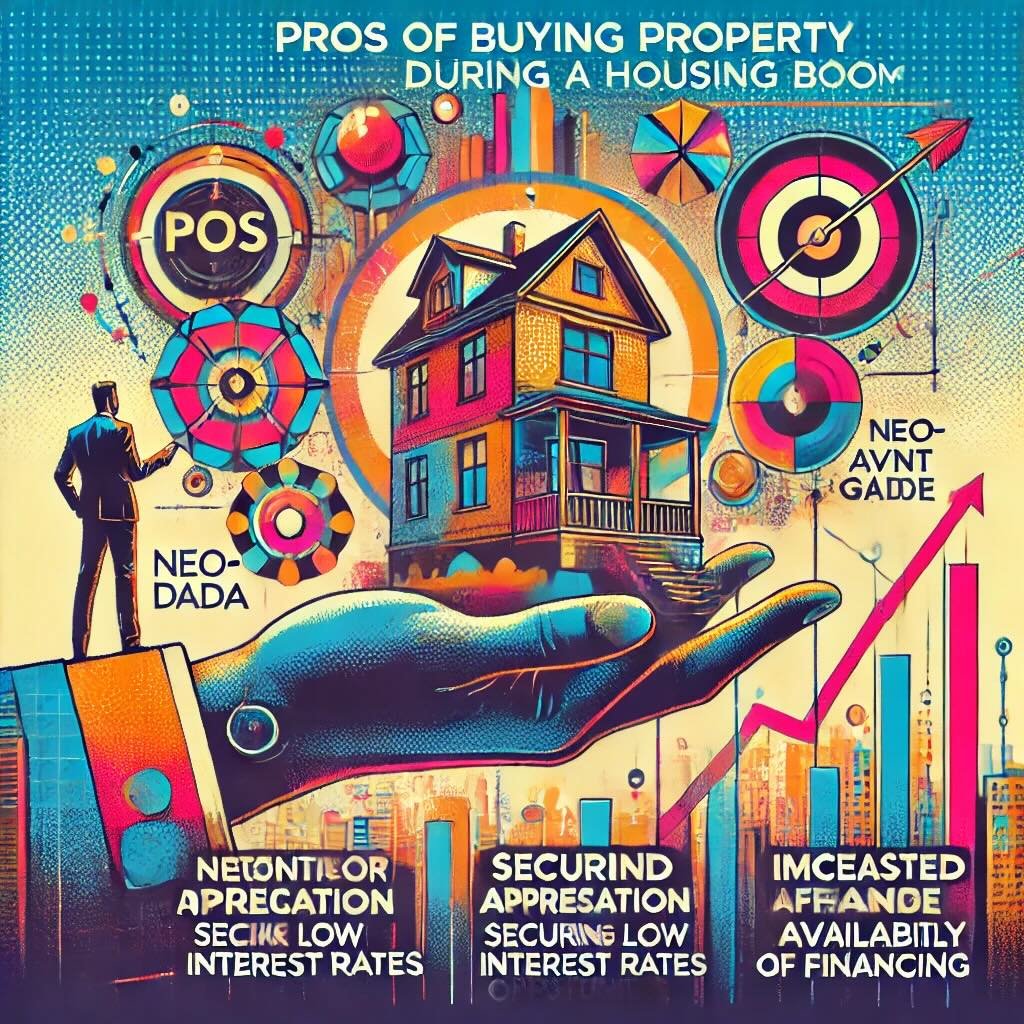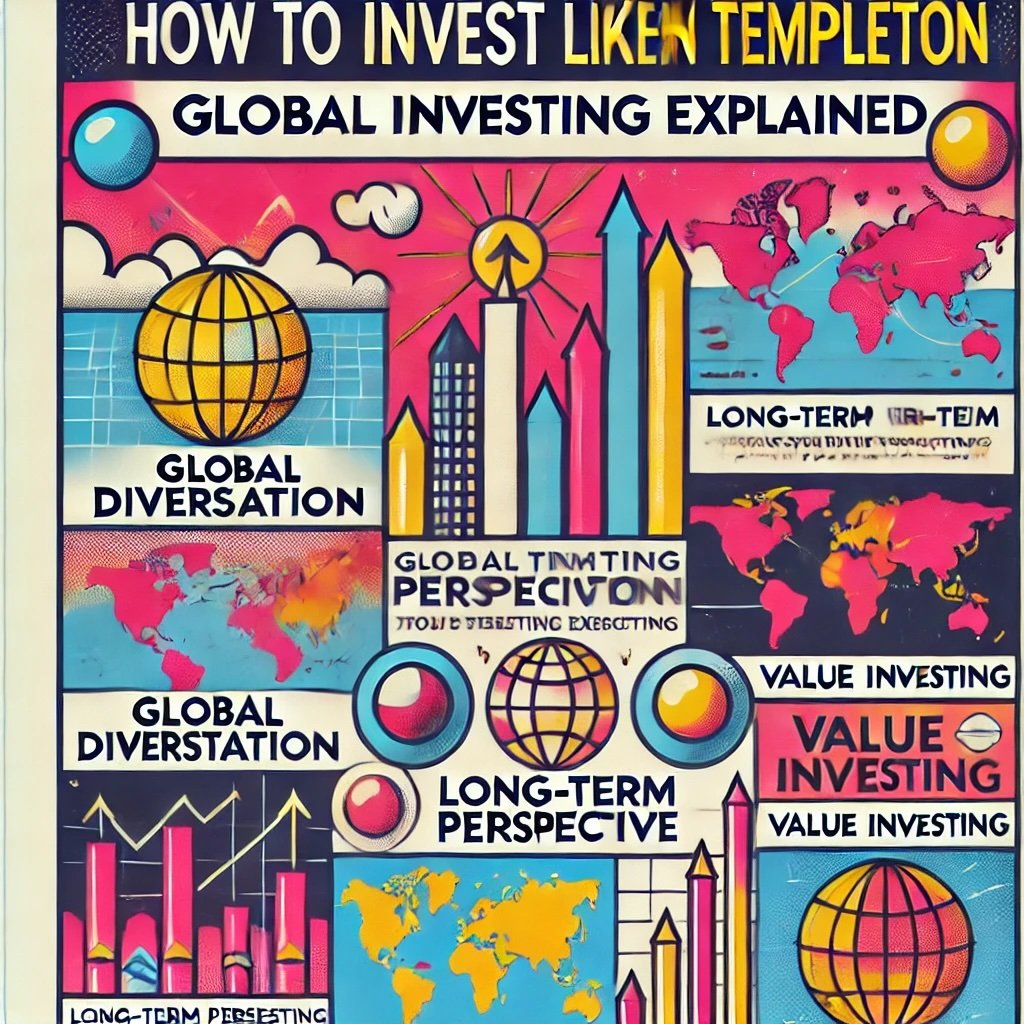A housing boom—sounds exciting, right? It’s that period when property prices soar, seemingly without limits. Fueled by factors like low interest rates, high demand, and often a surge of speculative buying, housing booms can create a frenzy in the real estate market. Homes sell quickly, bidding wars become the norm, and prices climb rapidly. While this might seem like a golden opportunity for buyers and investors alike, it’s not without its risks.
source: Javier Vedana on YouTube
Overview of Housing Booms
We’re going to take a closer look at the upsides and downsides of buying property during a housing boom. Whether you’re considering your first home or adding to your investment portfolio, understanding the pros and cons will help you make a more informed decision. We’ll explore the potential for quick gains and the risks of overpaying, offering insights to guide you through the complexities of purchasing property in a heated market.

Understanding a Housing Boom
Definition and Causes of a Housing Boom
A housing boom is a period marked by a significant and rapid increase in property prices, often fueled by several key factors. One of the primary triggers is low interest rates, which make borrowing cheaper and more accessible. When mortgage rates drop, more people are able to afford loans, which drives up demand for homes. Increased demand itself is another catalyst—whether driven by demographic shifts, economic growth, or changing social trends, when more people are looking to buy homes, prices naturally start to climb.
Another major factor is strong economic growth. When the economy is booming, incomes rise, employment rates are high, and consumer confidence soars. This creates an environment where more people feel financially secure enough to make large investments, such as buying property. Additionally, speculative buying—where investors purchase property with the expectation of selling it at a higher price—can also contribute to a housing boom, further inflating prices as competition intensifies.
Signs of a Housing Boom
Recognizing the signs of a housing boom can help buyers and investors make more informed decisions. Rapidly rising home prices are the most obvious indicator. When property values are increasing month over month, often at double-digit percentages, it’s a clear sign that the market is experiencing a boom.
Another key indicator is low inventory. In a booming market, there are often fewer homes available for sale compared to the number of interested buyers. This imbalance between supply and demand can lead to bidding wars, where multiple buyers compete for the same property, driving up the final sale price even further. Additionally, you might notice a shorter time on market for listings—homes that are snatched up within days or even hours of being listed.
These signs suggest a market that’s heating up, but they also indicate potential risks, as prices may eventually reach unsustainable levels, leading to a correction. Understanding these indicators can help you navigate the market more effectively, whether you’re looking to buy a home for yourself or invest in property during a boom.

The Pros of Buying Property During a Housing Boom
Potential for Quick Appreciation
One of the most enticing aspects of buying property during a housing boom is the potential for rapid appreciation. In a booming market, property values can skyrocket in a short period, leading to substantial gains for buyers. Imagine purchasing a home today and seeing its value increase by double digits within a few months—it’s a dream scenario for many. This appreciation can significantly boost your equity, allowing you to build wealth quickly. However, it’s essential to recognize that this rapid increase in value is tied to the market’s momentum, which can change unexpectedly.
Securing Low Interest Rates
Another significant advantage of buying during a housing boom is the opportunity to lock in low interest rates. Often, housing booms are fueled by favorable lending conditions, with mortgage rates at or near historical lows. Securing a low interest rate not only reduces your monthly mortgage payments but also saves you thousands of dollars in interest over the life of the loan. This is particularly beneficial if you plan to stay in the home long-term, as it allows you to take advantage of the market’s favorable conditions while minimizing your financing costs.
Increased Investment Opportunities
A booming market also opens the door to a variety of investment opportunities. If you’re looking to capitalize on rising prices, this could be the perfect time to invest in property with the intent to flip it for a profit or to generate rental income. Properties purchased during a boom can appreciate quickly, allowing investors to sell at a premium in a short period. Additionally, the rental market often heats up during these periods, with higher demand for rental properties leading to increased rental income potential. For investors with a keen eye for emerging markets and undervalued properties, a housing boom can present a wealth of lucrative opportunities.
Immediate Availability of Financing
During a housing boom, lenders are typically more willing to approve loans due to the favorable economic conditions. With low interest rates and high demand for mortgages, banks and other financial institutions may relax their lending criteria, making it easier for buyers to secure financing. This increased availability of credit can be a significant advantage, particularly for first-time buyers or those with less-than-perfect credit. The competition among lenders can also lead to more favorable loan terms, such as lower down payment requirements or reduced closing costs, making it an opportune time to finance a home purchase.

The Cons of Buying Property During a Housing Boom
Overpaying for Property
One of the biggest risks of buying during a housing boom is the potential for overpaying. In a heated market, property prices often exceed their intrinsic value, driven by high demand and speculative buying. You might find yourself paying significantly more for a home than it’s actually worth. The problem? When the market cools, those inflated prices can drop, leaving you with a property that’s worth less than what you paid for it. It’s a situation no buyer wants to find themselves in.
High Competition and Stress
Buying a home during a boom isn’t just expensive—it’s also incredibly stressful. The competition can be fierce, with multiple buyers vying for the same property. Bidding wars are common, and you may find yourself making snap decisions under pressure, offering more than you initially planned just to secure a deal. This high-stakes environment can lead to buyer’s remorse if you end up with a property that doesn’t fully meet your needs or stretches your budget too thin.
Lower Rental Yields
If you’re buying property as an investment during a boom, beware of lower rental yields. As property prices rise, the cost of purchasing a home increases, but rental rates don’t always keep pace. This can compress your rental yields, making buy-to-rent properties less attractive from an investment perspective. Essentially, while you may be paying more upfront, the income you generate might not justify the higher purchase price, diminishing your overall return on investment.
Risk of Market Correction
Finally, there’s the looming risk of a market correction. Housing booms don’t last forever, and when the market eventually corrects, prices can fall—sometimes sharply. If you’ve bought at the peak, you could see the value of your property drop, leading to potential losses if you need to sell or refinance. This risk underscores the importance of considering not just the current market conditions, but also the long-term sustainability of your investment.

Strategies for Buying During a Housing Boom
Conducting Thorough Market Research
In the whirlwind of a housing boom, it’s easy to get caught up in the excitement. But before making any moves, it’s crucial to conduct thorough market research. Understanding the local market conditions—such as average property prices, inventory levels, and trends—is essential. Look beyond the hype and dig into the data. Are prices rising across the board, or just in certain areas? What’s driving the demand? Answering these questions will help you make a more informed decision and avoid overpaying for a property.
Considering Long-Term Value
When buying during a boom, it’s tempting to focus on short-term gains, but don’t lose sight of the long-term value. Choose properties that will hold their value or appreciate even after the boom ends. This means looking for homes in desirable neighborhoods with good schools, access to amenities, and strong job markets. Properties with unique features, such as architectural character or potential for renovation, can also offer better long-term returns. Remember, the goal is not just to ride the wave of the boom, but to ensure your investment stands the test of time.
Maintaining Financial Flexibility
During a boom, it’s easy to get swept up in the buying frenzy and stretch your finances to the limit. But maintaining financial flexibility is key to managing risk. Keep some cash reserves to cover unexpected costs, such as rising interest rates or market corrections. Consider getting pre-approved for a mortgage with flexible terms that allow you to adapt to changing financial circumstances. By staying flexible, you’ll be better positioned to weather any market fluctuations and avoid financial strain.
Exploring Alternative Markets
If the primary market feels too hot to handle, consider exploring alternative markets. Emerging areas or less overheated regions can offer better value and less competition. These markets may not have the same level of buzz, but they often present opportunities for growth that more established areas might not. Look for signs of upcoming development, such as new infrastructure projects or an influx of businesses, which could signal future appreciation. Sometimes, the best investments are found off the beaten path.

Case Studies and Examples
Success Stories
Let’s start with a few success stories. During the housing boom of the early 2000s, savvy investors who bought properties in burgeoning neighborhoods saw substantial returns. Take the example of a couple who purchased a modest home in an up-and-coming suburb just outside a major city. At the time, the area was experiencing rapid development, with new schools, parks, and shopping centers springing up. Within a few years, their home’s value nearly doubled, thanks to the continued growth and demand in the area. Their success was rooted in careful research, understanding local trends, and choosing a property with strong long-term potential.
Another example comes from an investor who took advantage of the low interest rates during the same period. He purchased several rental properties in a market where the rental demand was high. By securing fixed-rate mortgages at historically low rates, he was able to lock in low monthly payments while his rental income steadily increased. The appreciation of the properties, combined with consistent cash flow, allowed him to build significant wealth over time. His success highlights the importance of leveraging favorable financing conditions and focusing on properties with strong rental potential.
Cautionary Tales
However, not every story from a housing boom has a happy ending. Consider the case of a first-time homebuyer who, during the mid-2000s boom, stretched her budget to buy a home in an overheated market. Enticed by the rapid price increases, she ignored the warning signs of a bubble. When the market crashed, her home’s value plummeted, leaving her underwater on her mortgage. Unable to sell or refinance, she faced years of financial stress. Her experience serves as a cautionary tale about the dangers of overpaying and the importance of assessing long-term value.
Another cautionary example involves an investor who purchased several properties during the same boom, expecting to flip them quickly for a profit. Unfortunately, the market cooled faster than anticipated. Unable to sell at the desired price, he was left holding multiple properties that he couldn’t offload without taking significant losses. His story underscores the risks of speculative buying and the volatility that can follow a housing boom.
12-Question FAQ: The Pros and Cons of Buying Property During a Housing Boom
1) What exactly is a housing boom?
A period of rapid, above-trend price growth fueled by cheap credit, strong demand, limited supply, and often speculation. Signs: fast-rising prices, multiple offers, homes selling in days, and low months of inventory.
2) What are the biggest advantages of buying during a boom?
Quick equity gains if momentum continues.
Low mortgage rates (if that’s part of the boom) that lock in cheaper lifetime borrowing.
Abundant financing and creative loan programs.
Strong resale liquidity while demand is hot.
3) What are the main risks?
Overpaying relative to rents/incomes.
Compressed rental yields for investors.
Waived protections (inspections/appraisal contingencies) under bidding pressure.
Correction risk—prices can retrace as rates rise or demand cools.
4) How can I tell if I’m overpaying?
Compare price-to-rent, price-to-income, recent comps adjusted for condition, and the appraisal. If the appraisal lags your offer or cap rates look unusually low versus history, you may be stretching.
5) Fixed-rate or adjustable-rate mortgage (ARM) in a boom?
Most buyers favor fixed-rate for certainty if rates rise or prices stall. ARMs can work if you’ll sell or refinance before the reset, but that’s a market-timing bet—build in a margin of safety.
6) How do I compete without reckless overbidding?
Get fully underwritten pre-approval.
Use tight timelines and higher earnest money instead of waiving inspection.
Offer limited, targeted repairs (not blanket waivers).
Add an appraisal gap cap you can truly afford (not unlimited).
Target stale listings or off-market opportunities.
7) Is buying a first home in a boom a bad idea?
Not necessarily. If the home fits a 5–10 year horizon, monthly costs are sustainable, and you’re not waiving critical protections, buying can still be rational—especially if rent is comparable or higher.
8) What should investors watch most closely?
Cap rate vs. financing cost (spread).
Rent growth durability (jobs, supply pipeline).
Exit liquidity if momentum fades.
Stress-test for higher vacancy and refi rates.
9) What happens if the market corrects after I buy?
Paper equity may drop. If you fixed your rate, have adequate reserves, and can hold through the cycle, the hit is often temporary. Risk rises if you must sell/refi soon or used high leverage.
10) What due diligence is non-negotiable in a hot market?
Inspection (at least informational).
Title search & seller disclosures.
Appraisal (or a capped gap plan).
Verify HOA/condo health, insurance costs, taxes, and zoning.
11) What are smart alternatives if my target area is overheated?
Hunt adjacent submarkets with better value.
Consider new builds with incentives.
Look at house-hack options (ADUs, duplexes).
Waitlists with builders or explore rate buydowns instead of price.
12) What red flags suggest froth vs. sustainable growth?
Double-digit YoY price gains outpacing income/rent growth.
High investor/flip share of purchases.
Ultra-low inventory and mass contingency waivers.
Speculative pre-build assignments trading at premiums.

Conclusion
Buying property during a housing boom offers both opportunities and challenges. On the one hand, you have the potential for quick appreciation, low interest rates, and a variety of investment opportunities. On the other, you face the risks of overpaying, intense competition, lower rental yields, and the possibility of a market correction. Each of these factors plays a critical role in the decision-making process.
Final Thoughts
Whether buying during a boom is advisable depends largely on your personal circumstances, financial stability, and risk tolerance. If you’re well-prepared and have done your research, a housing boom can present profitable opportunities. However, it’s crucial to remain cautious, avoid getting swept up in the hype, and consider how the purchase will fare in the long run. Remember, markets are cyclical, and what goes up can—and often does—come down.
Before making a purchase during a housing boom, take the time to weigh your options carefully. Conduct thorough research, consider the long-term implications, and don’t rush into decisions based on fear of missing out. Buying a property is a significant financial commitment, and it’s essential to ensure that the timing, market conditions, and your personal situation align with a prudent investment strategy.
Important Information
Comprehensive Investment Disclaimer:
All content provided on this website (including but not limited to portfolio ideas, fund analyses, investment strategies, commentary on market conditions, and discussions regarding leverage) is strictly for educational, informational, and illustrative purposes only. The information does not constitute financial, investment, tax, accounting, or legal advice. Opinions, strategies, and ideas presented herein represent personal perspectives, are based on independent research and publicly available information, and do not necessarily reflect the views or official positions of any third-party organizations, institutions, or affiliates.
Investing in financial markets inherently carries substantial risks, including but not limited to market volatility, economic uncertainties, geopolitical developments, and liquidity risks. You must be fully aware that there is always the potential for partial or total loss of your principal investment. Additionally, the use of leverage or leveraged financial products significantly increases risk exposure by amplifying both potential gains and potential losses, and thus is not appropriate or advisable for all investors. Using leverage may result in losing more than your initial invested capital, incurring margin calls, experiencing substantial interest costs, or suffering severe financial distress.
Past performance indicators, including historical data, backtesting results, and hypothetical scenarios, should never be viewed as guarantees or reliable predictions of future performance. Any examples provided are purely hypothetical and intended only for illustration purposes. Performance benchmarks, such as market indexes mentioned on this site, are theoretical and are not directly investable. While diligent efforts are made to provide accurate and current information, “Picture Perfect Portfolios” does not warrant, represent, or guarantee the accuracy, completeness, or timeliness of any information provided. Errors, inaccuracies, or outdated information may exist.
Users of this website are strongly encouraged to independently verify all information, conduct comprehensive research and due diligence, and engage with qualified financial, investment, tax, or legal professionals before making any investment or financial decisions. The responsibility for making informed investment decisions rests entirely with the individual. “Picture Perfect Portfolios” explicitly disclaims all liability for any direct, indirect, incidental, special, consequential, or other losses or damages incurred, financial or otherwise, arising out of reliance upon, or use of, any content or information presented on this website.
By accessing, reading, and utilizing the content on this website, you expressly acknowledge, understand, accept, and agree to abide by these terms and conditions. Please consult the full and detailed disclaimer available elsewhere on this website for further clarification and additional important disclosures. Read the complete disclaimer here.




